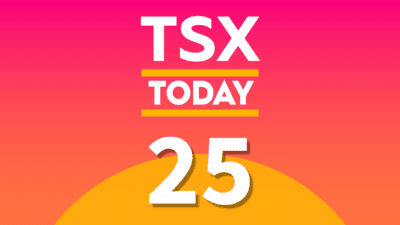Canada’s top five banks have continued to perform strongly on the back of a buoyant housing market and growing demand for credit. But there are fears among some economists and market pundits that Canada’s housing market is overheated and prices will cool significantly.
Rising household debt levels and elevated housing prices have made the economy more vulnerable to external risk factors and left households particularly vulnerable to any external economic shocks. Some analysts also speculate that growing unemployment, higher interest rates and a decline in real estate markets will hit already financially stretched households hard. This poses a risk to the credit quality of the big five’s retail lending portfolios, which could lead to rising mortgage delinquencies.
This would have a significant impact on the financial performance of the top five, and raises the specter of the near collapse of the U.S. banking system due to the subprime lending crisis. That makes it imperative that investors get a handle on just how healthy Canada’s banks are.
Capital adequacy is high
The first key measure for determining the health of a bank is its capital adequacy. We assess this by looking at a bank’s tier one and tier two capital ratios. Tier one capital is the capital required for a bank to absorb losses without having to cease trading, while tier two is the capital that can absorb losses in the event of a winding up.
Essentially they are designed to promote stability in the banking industry and protect depositors. The OSFI has set the minimum tier one capital ratio at 7%. As the chart below illustrates, the top five have ratios above the minimum requirement. The Bank of Montreal (TSX:BMO)(NYSE:BMO) has the highest ratio, followed by the Royal Bank of Canada (TSX:RY)(NYSE:RY).
|
Bank |
Market Cap ($billion) |
BASEL III Common Equity Tier One Capital Ratio |
| Royal Bank of Canada |
$105.2 |
9.6% |
| Toronto Dominion Bank |
$90.9 |
9% |
| Bank of Nova Scotia |
$78.2 |
9.1% |
| Bank of Montreal |
$46.8 |
9.9% |
| CIBC |
$35.6 |
9.4% |
Source: Company financial filings.
High quality credit portfolios are key
Credit quality is key to a bank’s profitability and management of risk, with loans forming the key assets of any commercial bank. It was the volume of poor quality subprime loans made by a number of U.S. banks that brought the U.S. banking system to the point of collapse in 2007.
Credit quality is measured by the non-performing loan ratio, which is the percentage of impaired loans to total loans. A healthy non-performing loan ratio is typically considered to be 3% or less. Among Canada’s top five, another popular method for measuring the quality of their credit portfolio is the provision for credit losses ratio. This is an estimation of the losses that impaired loans will cost the bank.
Taking a close look at the table each of the top five has a low non-performing loan ratio well within accepted tolerances coupled with a low provision for credit losses ratio.
| Bank |
NPL Ratio |
PCL Ratio |
| Royal Bank of Canada |
1% |
0.32% |
| Toronto Dominion Bank |
0.60% |
0.38% |
| Bank of Nova Scotia |
0.90% |
0.32% |
| Bank of Montreal |
0.91% |
0.27% |
| CIBC |
0.6% |
0.44% |
Source: Company financial filings.
Clearly each of the top five has a high level of credit quality, and as such, a low level of credit risk. The standout performer based on those ratios is Toronto Dominion Bank (TSX:TD)(NYSE:TD).
It has the lowest non-performing loan ratio, but the second highest provision for credit loss ratio, illustrating that the quality of its loan book is higher than that of the other four banks. But the higher PCL ratio is of some concern and can be interpreted in one of two ways.
Perhaps the financial impact of its non-performing loans is greater than it is for the Royal Bank of Canada, the Bank of Nova Scotia (TSX:BNS)(NYSE:BNS) and the Bank of Montreal. Alternatively, Toronto Dominion may be provisioning for potential credit losses at a higher level than those banks, giving it a greater degree of coverage for its potential credit losses.
Three of the top five have seen the value of their impaired loans decline in the fourth quarter 2013. In comparison to the previous quarter, the Bank of Nova Scotia’s fell by 2.5%, the Bank of Montreal’s by 4% and CIBC’s (TSX:CM )(NYSE:CM) by 4.9%. But for the same period, Toronto Dominion’s impaired loans grew by 2.4% and Royal Bank of Canada’s by 6%.
Both ratios indicate that each of the top five has a high quality credit portfolio and even if delinquencies were to increase, it would not have a significant impact on the quality of their balance sheets.
Foolish bottom line
From a risk perspective, each of the top five is well positioned to weather a worsening credit environment. Not only are they more than adequately capitalized but they have high quality credit portfolios with only a small portion of impaired or non-performing loans.







